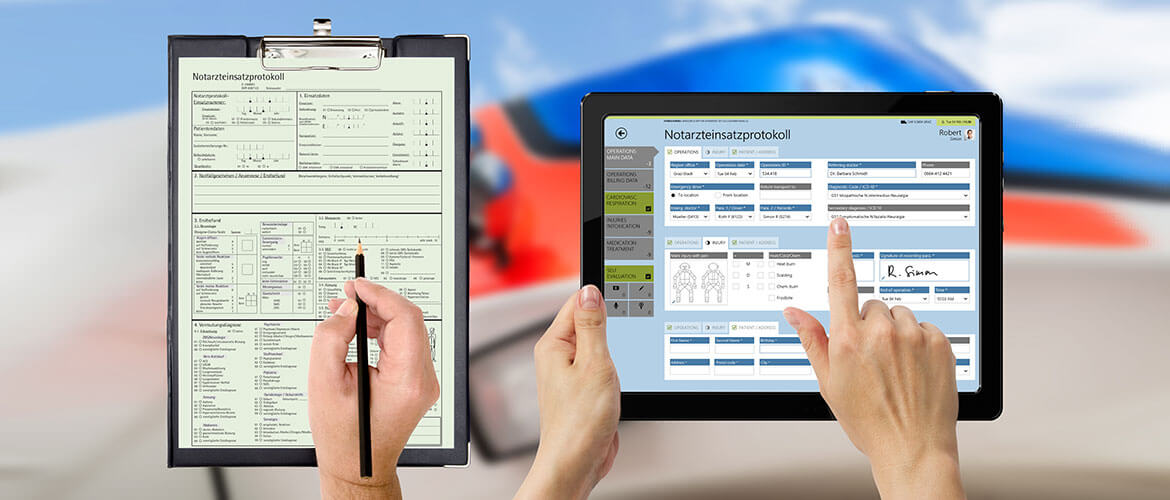When paper forms learn “to walk”
In some areas of the health system, it is still necessary to fill out paper forms, sometimes also with carbon copies, like for example the emergency protocol of rescue organizations. Everyone knows that this limits readability. And the patient safety.
Digital forms provide more security and transparency. To collect medical data on-site and to integrate them in clinical and administrative processes without loss of time, also increases efficiency.
Who, what, how, what, where, and then?
Paper forms everywhere …
Paper forms everywhere …
So far (Who?) the paramedics and emergency physicians of a rescue organization did their (what?) medical documentation (how?) with printed forms and had different forms for each type of operation. The manually filled-in paper forms and the carbon copies (where?) were then passed to various departments, where they were retyped (and then?) and entered into data bases. Time delay, transmission errors and inaccuracies by illegible handwriting and incomplete entries were an almost inevitable consequence.
It can be completely different …
To digitize a paper form is very simple – but the feature is to give the electronic form “skills” that simplify your work. The reports of the emergency medical services are good examples to demonstrate this.
… as practice shows.
Reference customers for HybridForms are for example the Federal State Government of Styria/Austria (emergency medical and rescue services) or the Hospital Group Spital STS in Switzerland (medical services). The savings on administration of more than 3,000 hours speak for themselves. Time that can be used for the essential tasks – the care for patients. The error rate is significantly reduced through transparent and continuously traceable documentation. This way projects can yield a quick return on investment within a few months.
Find out for yourself!
Press review: This article was published in the ÖKZ magazine – The Austrian health system, vol. 56 (2015) 10, page 23
